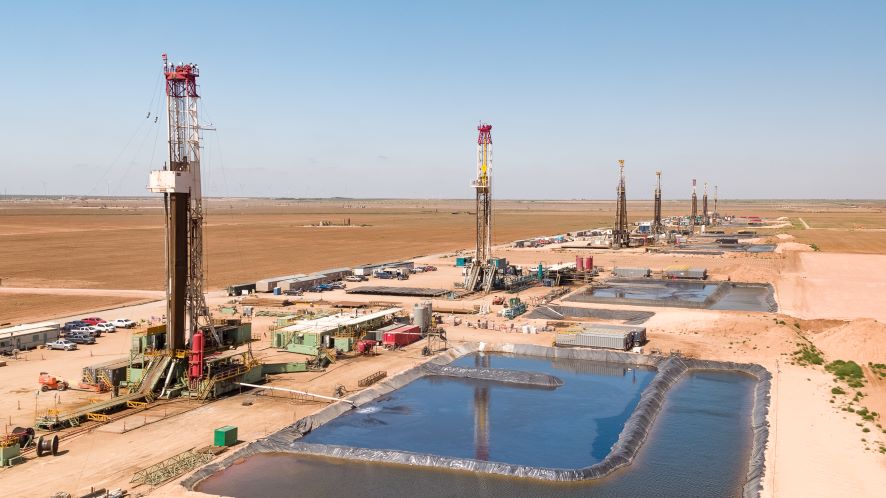In the changing landscape of the oil and gas industry, one trend stands out as a beacon of efficiency and innovation: the continuous push for longer laterals. As the demand for hydrocarbons continues, operators are extending their lateral lengths to maximize recovery from oil reservoirs.
According to industry experts, lengthening lateral wells is one of the most basic ways to enhance recovery because extending the horizontal reach allows access to more of the reservoir.
“In general, things continue to get longer and longer. Increasing lateral length is one of the most straightforward ways that E&Ps have been able to improve the efficiency of their operations,” Steve Diederichs, director of oil and gas research at Enverus, told E&P. “Across every single basin where operators have the opportunity to do so, we see them pushing laterals longer where they can.”

From the Permian Basin to the Eagle Ford and beyond, operators are pushing the boundaries of lateral drilling, hoping to extract the maximum volume of hydrocarbons from their assets. And while the benefits of longer lateral drilling are evident, the process is not without its challenges.
Acquiring acreage and consolidating assets are among the top priorities for companies looking to expand their drilling operations and unlock the potential of lateral wells. Securing the acreage position to support long laterals poses a significant hurdle for some operators, as they need a “contiguous block of land that lets them drill at least three miles,” Diederichs said.
Other challenges, such as equipment availability, also require careful navigation. Specialized equipment, such as extended-reach coiled tubing units, is essential for successfully drilling and completing longer lateral wells, yet it is often a struggle to find this equipment, he said. The completion of the toe, or the end of the horizontal leg, is another challenge that must be addressed.
“With longer laterals, there are often challenges with efficiently fracking the farthest portion of the well out in the toe. Operators have made some improvements in being able to better complete the toe of these longer wells, which improves their ability to not lose anything in terms of total resource capture with longer laterals,” Diederichs said.
When comparing 2-mile wells to 3-mile wells, the estimated ultimate recovery (EUR) increases proportionally with the longer wells, he said. Despite friction issues causing some loss, the recovery per unit of length remains fairly consistent between two-mile and three-mile wells.
Operators have made strides in enhancing the completion process to maximize resource capture from extended lateral wells. Breakthroughs in equipment and technology have addressed logistical challenges associated with drilling and cleaning out longer wellbores. Innovations in directional drilling techniques, downhole tools and hydraulic fracturing methods have enabled operators to navigate complex geological formations and extract hydrocarbons more efficiently than ever.
“Typically, what we’re seeing out of longer lateral wells is not a huge change to the EUR on a per-foot basis compared to 2-mile wells, but we are seeing changes to the shape of the production profile,” Diederichs said.
With more reservoir contacted by a single wellbore, more hydrocarbons flow back to the surface. Operators often manage this by avoiding excessive early flowback, which allows them to optimize surface facilities without overbuilding them.
This creates a slightly lower peak rate on a lateral length normalized basis but fairly similar ultimate recoveries on a per-foot basis, he said, explaining, “It essentially shallows the decline of wells with a slightly lower peak rate for longer lateral wells.”
Meeting Regulatory Guidelines
Regulatory considerations are generally manageable, Diederichs said, with longer laterals potentially offering environmental advantages. By reducing the number of surface pad locations and consolidating drilling operations, longer lateral wells can minimize surface disturbance and mitigate environmental impacts.
From a regulatory perspective, longer lateral drilling projects may face similar permitting requirements as traditional drilling operations, with additional considerations for well spacing and setback requirements. However, the concentration of drilling activities on fewer surface pads can streamline the regulatory approval process and facilitate compliance with environmental regulations.
“The case could probably be made that these are better from an environmental perspective in that you’ll have fewer surface pad locations for the same amount of lateral footage drilled,” he said.
Diederichs pointed to Exxon Mobil as a frontrunner in longer lateral drilling, with notable successes in pushing the limits of lateral length. Acquisitions of companies like Pioneer Natural Resources have bolstered Exxon’s position, providing access to extensive acreage for further development.

“Exxon is probably the name that we would view as being most likely to be a leader in longer lateral drilling. You can already see them having the top three wells,” Diederichs said. “The acquisition of Pioneer gives them a very, very blocky acreage position with a lot of completely undeveloped units from the horizontal perspective, meaning they have a ton of high-quality acreage. That’s a blank slate of how they want to develop it.”
Other major operators, including Chevron and Shell, are also investing in longer lateral drilling projects, encouraged by the potential for enhanced resource recovery and improved economic returns.
Diederichs anticipates a continued trend toward longer laterals, driven by technological advancements and consolidation. As operators gain access to larger and better acreage positions, the potential for longer lateral drilling projects will continue to grow. Ongoing innovations in drilling and completion techniques are expected to further enhance the efficiency and cost-effectiveness of longer lateral wells, which will shape the landscape of oil and gas exploration for years to come.
Recommended Reading
E&P Highlights: Feb. 3, 2025
2025-02-03 - Here’s a roundup of the latest E&P headlines, from a forecast of rising global land rig activity to new contracts.
E&P Highlights: March 31, 2025
2025-03-31 - Here’s a roundup of the latest E&P headlines, from a big CNOOC discovery in the South China Sea to Shell’s development offshore Brazil.
E&P Highlights: March 17, 2025
2025-03-17 - Here’s a roundup of the latest E&P headlines, from Shell’s divestment to refocus its Nigeria strategy to a new sustainability designation for Exxon Mobil’s first FPSO off Guyana.
E&P Highlights: Feb. 18, 2025
2025-02-18 - Here’s a roundup of the latest E&P headlines, from new activity in the Búzios field offshore Brazil to new production in the Mediterranean.
E&Ps Pivot from the Pricey Permian
2025-02-01 - SM Energy, Ovintiv and Devon Energy were rumored to be hunting for Permian M&A—but they ultimately inked deals in cheaper basins. Experts say it’s a trend to watch as producers shrug off high Permian prices for runway in the Williston, Eagle Ford, the Uinta and the Montney.
Comments
Add new comment
This conversation is moderated according to Hart Energy community rules. Please read the rules before joining the discussion. If you’re experiencing any technical problems, please contact our customer care team.




